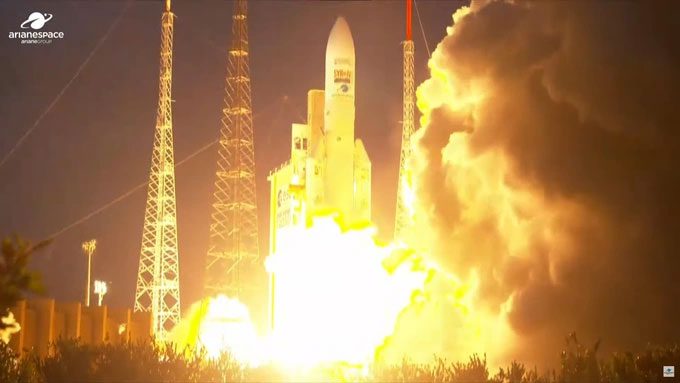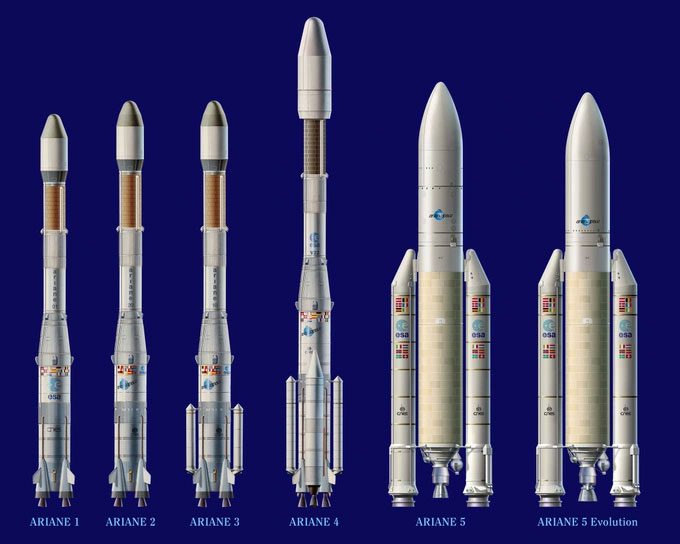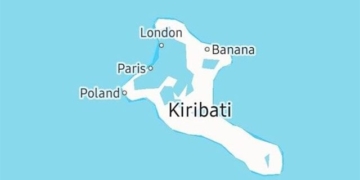After 27 years of service, the heavy-lift rocket of the European Space Agency has officially completed its final launch before retirement.
In the early hours of July 6 (Vietnam time), the European Space Agency (ESA) successfully launched the Ariane 5 rocket from the European Spaceport in Kourou, French Guiana.

The Ariane 5 rocket lifts off during its final mission, conducted from the European Spaceport in Kourou, French Guiana on July 5 (Photo: Arianespace).
Approximately 2.5 minutes after liftoff, the 31.6-meter tall solid-fueled rocket completed its first stage. Its single engine continued to operate, carrying two satellites into low Earth orbit.
About 30 minutes after launch, the first satellite named Heinrich Hertz was separated from the rocket. Three minutes later, the second payload, called Syracuse 4B, also completed its separation process to prepare for operational deployment.
“Ariane 5 has performed excellently throughout its mission,” stated Stéphane Israël, CEO of Arianespace, the French-based company operating the rocket. “Now, it truly is a legend.”
Previously, on June 16, the final launch of Ariane 5 had to be canceled due to technical issues. The most recent attempt on July 4 was also aborted due to adverse weather conditions.
The successful flight concluded nearly 30 years of operational service for the Ariane 5 rocket. It is known for its powerful capabilities, significantly outperforming the four previous Ariane versions.

Comparison of rockets from Ariane 1 to Ariane 5 (Photo: ESA).
ESA spokesperson emphasized that Ariane 5 leaves behind an incredible legacy of technical prowess and reliability. “Throughout its operational period, Ariane 5 has been a valuable asset for Europe to ensure our independent access to space,” the representative shared.
The first launch of the Ariane 5 rocket took place in 1996; however, that launch did not reach orbit and had to be self-destructed afterward.
Following the failure of its inaugural launch, Ariane 5 became one of the most reliable launch vehicles in the world, successfully completing 117 missions and delivering 239 payloads into orbit. According to ESA, the estimated mission success rate of the rocket stands at 96%.
Development of the Ariane 5’s successor, Ariane 6, has been underway for over a decade. ESA has stated that Ariane 6 will feature a completely new launch system, characterized by flexibility, cost-effectiveness, and the capability to accommodate various launch profiles compared to Ariane 5.
Ariane 6 is expected to debut by the end of 2023.





















































